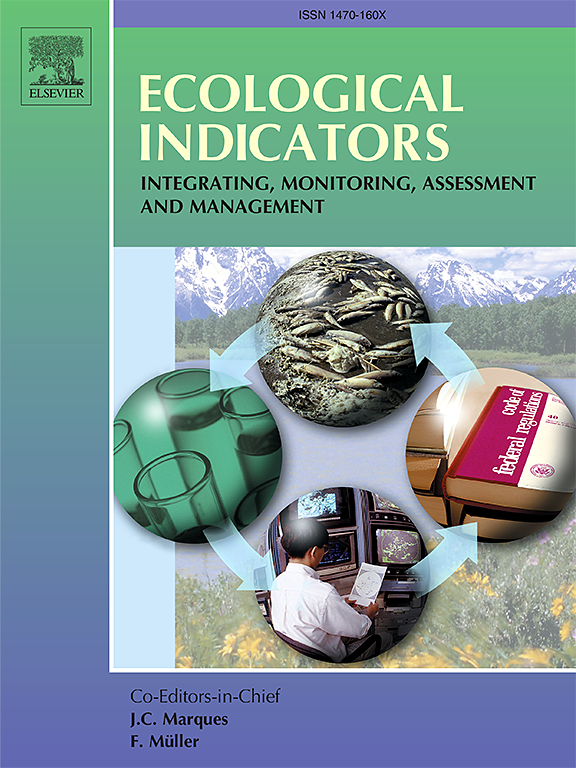Prediction analysis and control strategies on coupling coordination between low-carbon transportation and high-quality economic development in the backward U-shaped bend metropolitan area of the Yellow River Basin
IF 7
2区 环境科学与生态学
Q1 ENVIRONMENTAL SCIENCES
引用次数: 0
Abstract
The coordinated development of the economy and low-carbon transportation in ecologically sensitive areas has always been a persistent challenge for urban development. Optimizing the low-carbon transportation system is critical for achieving high-quality economic development in a typical ecologically sensitive region, the backward U-shaped bend metropolitan area (BUBMA) of the Yellow River Basin. With the acceleration of China’s Dual Carbon targets, understanding the interactive relationship between low-carbon transportation (LCT) and high-quality economic development (HQED) is an essential prerequisite for advancing ecological protection and implementing high-quality development strategies. This study explores the coupling coordination problem and its prediction and regulatory strategies during the spatiotemporal evolution of LCT and HQED in the BUBMA by employing methods such as the Coupling Coordination Degree (CCD), Monte Carlo simulation (MC), and Grey prediction.
The findings reveal the following: (1) The comprehensive indices of 15 cities exhibit significant disparities during the entire research period, characterized by high values in the central region and low values at both ends for LCT, while HQED demonstrates a transition from an evident “olive-shaped” spatial pattern to one marked by high values in the south and low values in the north. (2) The proposed CCD prediction framework can offer an objective reflection of future trends. The CCDs of these 15 cities have shown a growth trend, with the average CCD projected to reach the stage of barely coordinated development(0.554)by 2030. (3) Four key indicators,which include the share of non-fossil energy consumption, highway network density, air passenger traffic per 10,000 people and high-speed rail mileage per 10,000 people, have significant positive driving effects on the development of LCT. The comprehensive regulatory strategies for these influencing factors are proposed based on forecast and target scenarios. The empirical findings provide important insights for optimizing the CCD and its regulation strategies of these two systems, thus providing guidance for formulating coordinated development policies and sustainable governance strategies.
黄河流域后U型弯都市区低碳交通与经济高质量发展耦合协调的预测分析与调控策略
生态敏感区经济与低碳交通的协调发展一直是城市发展面临的持久挑战。优化低碳交通系统是黄河流域典型生态敏感区“后u型弯道都市圈”实现经济高质量发展的关键。随着中国“双碳”目标的加快推进,理解低碳交通与高质量经济发展之间的互动关系,是推进生态保护、实施高质量发展战略的重要前提。本研究采用耦合协调度(CCD)、蒙特卡罗模拟(MC)和灰色预测等方法,探讨了bbuma中LCT和HQED在时空演化过程中的耦合协调问题及其预测和调控策略。结果表明:(1)15个城市的综合指数在整个研究期内呈现出中部高、两端低的显著差异,而HQED则呈现出明显的“橄榄形”空间格局向南高北低的空间格局过渡。(2)提出的CCD预测框架能够客观反映未来趋势。这15个城市的CCD呈增长趋势,预计到2030年平均CCD将达到勉强协调发展阶段(0.554)。(3)非化石能源消费比重、公路网密度、万人口航空客运量和万人口高铁里程4个关键指标对城市轻轨发展具有显著的正向驱动作用。基于预测情景和目标情景,提出了针对这些影响因素的综合调控策略。实证结果为优化这两个系统的CCD及其调控策略提供了重要见解,从而为制定协调发展政策和可持续治理策略提供了指导。
本文章由计算机程序翻译,如有差异,请以英文原文为准。
求助全文
约1分钟内获得全文
求助全文
来源期刊

Ecological Indicators
环境科学-环境科学
CiteScore
11.80
自引率
8.70%
发文量
1163
审稿时长
78 days
期刊介绍:
The ultimate aim of Ecological Indicators is to integrate the monitoring and assessment of ecological and environmental indicators with management practices. The journal provides a forum for the discussion of the applied scientific development and review of traditional indicator approaches as well as for theoretical, modelling and quantitative applications such as index development. Research into the following areas will be published.
• All aspects of ecological and environmental indicators and indices.
• New indicators, and new approaches and methods for indicator development, testing and use.
• Development and modelling of indices, e.g. application of indicator suites across multiple scales and resources.
• Analysis and research of resource, system- and scale-specific indicators.
• Methods for integration of social and other valuation metrics for the production of scientifically rigorous and politically-relevant assessments using indicator-based monitoring and assessment programs.
• How research indicators can be transformed into direct application for management purposes.
• Broader assessment objectives and methods, e.g. biodiversity, biological integrity, and sustainability, through the use of indicators.
• Resource-specific indicators such as landscape, agroecosystems, forests, wetlands, etc.
 求助内容:
求助内容: 应助结果提醒方式:
应助结果提醒方式:


